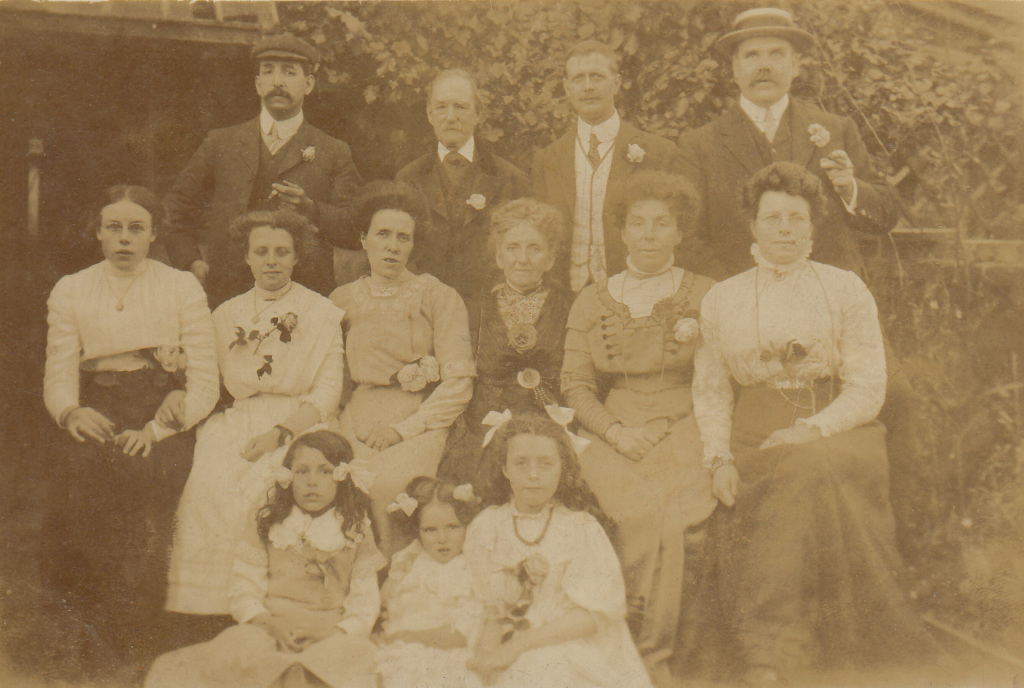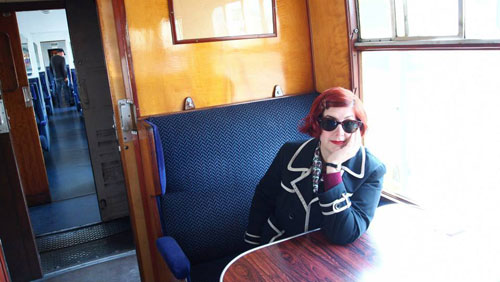This might look like a fairly ordinary photograph brooch, but it has a secret….
Audio transcript (PDF – 40KB)
This might look like a fairly ordinary photograph brooch, but it has a secret….
Audio transcript (PDF – 40KB)

What? All that in one blog post? Erm… no… however, there’s been a couple of jumps forward with regards to the availability of wills and will indices recently, especially for Essex but for Suffolk in a way too, so that’s my topic for today. And because I’m a librarian who spends a lot of time trying to extract information from databases and catalogues, I want to share some of my search skills with you.
The first book by Janice Preston, historical romance novelist, was published this summer. Mary and the Marquis tells the tale of a widow, who finds an injured man in the woods whilst travelling with her children – he just happens to be a rather handsome but grumpy and troubled marquis, fallen on hard times. There follows the discovery of their mutual love, with plenty of misunderstandings, passionate clinches, and even attempted sheep-stealing along the way! I was very impressed by Janice’s convincing historical setting, while she told a gripping tale of love and adventure with well-drawn, engaging characters. I caught up with Janice to find out more.
Everyone knows about Guy Fawkes, the Catholic Yorkshire man [1]Some might claim, Somerset man, but that is Robert Parsons, who came from outside Bridgwater, allegedly one of the main instigators. who was put to death with his co-conspirators for plotting to blow up the Houses of Parliament.
But did you know that the village of Lawshall in Suffolk has a connection with The Gunpowder Plot?
In amongst Lawshall’s 16th century marriages, there is a note that says:
Memor: It is to be remembered that the Queens highnesse Elizabeth, in hir progresse riding from Melford to Bury 5. Aug. Regina 20. an. Dni. 1578 prd. dined at Lawshall Hall, to the great rejoicing of ye said parish & Country thereabouts.
Elizabeth I’s progresses around the country are well-known, where she dropped in on local dignitaries and graced them with her presence for the duration of a meal, or to stay the night – it is a cliché when country houses say “And this is the room that Elizabeth I slept in.” The people of Lawshall may have felt rather lucky to have the most important person in England come for a visit – she and her entourage were given lunch by Henry Drury, who lived at Lawshall Hall.
I wondered if the locals would have commemorated this visit by naming their daughters Elizabeth. From September 1578 to 24th March 1579/80, there are twenty-seven baptisms in the Lawshall register, and almost half of them are for girls: thirteen. And how many of these girls were named Elizabeth? Most of them, you’re thinking, right?
Footnotes
| ↑1 | Some might claim, Somerset man, but that is Robert Parsons, who came from outside Bridgwater, allegedly one of the main instigators. |
|---|

What I’m about to write has nothing to do with genealogy, although it’s something that happened to me and a friend of mine in Wivenhoe, so it’s vaguely relevant. Of course, spending time in churchyards and cemeteries, amongst the relics of the past, does rather open you up to the sometimes-restless existence of the dead. Also, it’s Hallowe’en, which seems like as appropriate a time as any to write this, and news that Guy Lyon Playfair’s book This House is Haunted, about the Enfield poltergeist case, is being dramatised, has brought back memories which I cannot quite forget. But don’t blame me if it gives you nightmares.

Growing up in Wivenhoe, I probably saw a greater mix of people from around the world than had I lived in a town of the same size that wasn’t anywhere near a university. When I was five years old, there were some boys in my class at Broomgrove Infants who were from Peru! Their fathers were visiting academics at the University of Essex, you see. And international students from Africa and Asia and everywhere else in between made Wivenhoe their home.
But in transcribing the parish register for Wivenhoe, it seems that the town had been the home of people from afar before. With uncanny coincidence, while transcribing the 1751-1812 baptisms and burials register during October – Black History Month – I found references to Wivenhoe residents of the past who were black.
In researching my novel, which is set in the mid-1930s, I needed to do some research into train journey times. As any good Agatha Christie fan will know, the ABC railway guide was just what I needed, and I managed to get hold of a very exhausted one for April 1934 (Christie’s novel, The A. B. C. Murders, was published in January 1936). The ABC was first published in 1853, and was very much London-centric. So you can find out the 9.19am train from Wivenhoe arrived at London Liverpool Street at 10.36am (and operated on Mondays only) but if you want the times of trains from Wivenhoe to Colchester… well… this guide isn’t going to tell you.
The front of the book, before the timetables, is filled with hotel adverts. Starting with London, they are then alphabetical by the name of the town or city, and include the Channel Islands.
Most of the adverts (and there are hundreds!) are not very interesting – it’s incredible how similar hotel frontages at the time were. The ad will consist of an exterior photo or line-drawing of the hotel, very standard font and blurb about the hotel – such as the adverts for The Royal Esplanade, Seaford and Ryde Castle Hotels in Ryde on the Isle of Wight. Rustington I have included here for looking like Mr. Rochester’s house in “Jane Eyre”, with its crenellations.
However, the bulk of the adverts in this gallery (follow the link to Flickr or see the slideshow below) are in fact not representational, and have been included here because they are rather interesting.

I’m very lucky that so many photos of my relatives have survived. The above is one of my favourites – a family group – and I have been trying for some time to identify all the sitters. On the back row on the left, we have my great-grandfather, John Henry Nunn (1862-1936). On the middle row, third from the left, we have John’s wife – my great-grandmother Frances Louise, née Ashworth (1876-1961). The older lady sitting on Frances’ left was identified by my grandad’s cousin Dorothy (1912-2011) as Elizabeth, née Shrimpton (1840-1915).
Dorothy remembered Elizabeth (her grandmother) as an elderly, bedridden lady, who didn’t seem to mind her young grandchildren romping about on her bed.[1]Dorothy was remembering something that happened to her as a toddler, which might make people scoff, but I have oddly vivid memories from that age myself – snapshots of being at playgroup before … Continue reading Elizabeth was the mother of nine children, and grandmother to many more. Her life story is quite interesting – it turns out that she was never actually married to her second husband, James Thomas Ashworth (1849-1890), and as a teenager, she hung about in a London park with an uncle, a soldier invalided out of the Army during the Crimean War. She was illegitimate and it seems that she moved from Chesham in Buckinghamshire (where she was washed under the pump every morning in the yard outside their cottage, even in the middle of winter) to London with her aunts.
But aside from that – I wanted to see if I could date the above photograph (which might help me identify the people in it), and so analysed it for possible clues.
Footnotes
| ↑1 | Dorothy was remembering something that happened to her as a toddler, which might make people scoff, but I have oddly vivid memories from that age myself – snapshots of being at playgroup before I started school, and of my brother’s birth when I was three. |
|---|

In July, I went to Somerset to visit my dad, and we ended up in the Smuggler’s Cave in Watchet. There’s all sorts of treasures to be found here – antiques, mid-20th century bits and bobs, from grand polished dining tables to boxes of bent cutlery. I was rummaging through some photos and 1950s receipts, when I struck up a conversation with the chap who runs the shop.
“If you like old photos,” he said, “You’ll love this old album I got the other day at a car-boot sale.”
Off he went and came back with a dark green album, which at the beginning was full of late Victorian and Edwardian family photos, with first names added. Family sat outside a house, a line of Edwardians strung together as they ascend an icy mountain, horse-riding in Ireland. Following these were page after page of very old postcards, mainly of churches and cathedrals. At the back, there were newspaper clippings from WW1 with photos of soldiers who had been killed – Thomas Eland Clatworthy and Harold Richard Taylor. Further on, there was a programme for an evening of genteel entertainment at Flook House in Taunton, and photos of someone in… India? All the photos have been glued in, so there’s no chance of peering behind to see what might have been written on their backs.
Yesterday[1]I started to write this on Christie’s birthday, but this behemoth could not be completed in one day. was Agatha Christie’s 124th birthday, so it seems appropriate to carry on with Wilkie Collins and Sensation Novels – how they developed into what we recognise as detective fiction.
So polish your magnifying glass, button up your Ulster, wax your moustache, and we shall travel back to Road, Somerset in 1860, to the scene of a real crime.
(Needless to say, this contains multiple spoilers).
Footnotes
| ↑1 | I started to write this on Christie’s birthday, but this behemoth could not be completed in one day. |
|---|